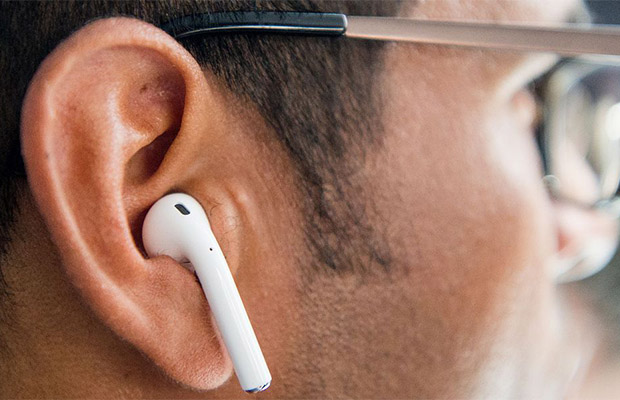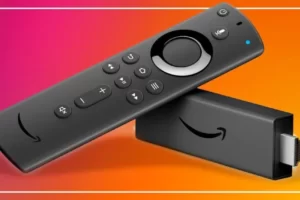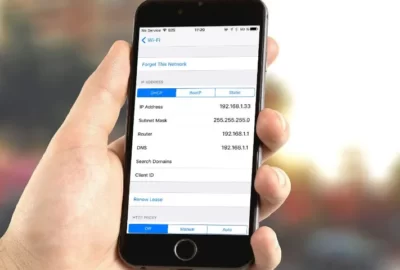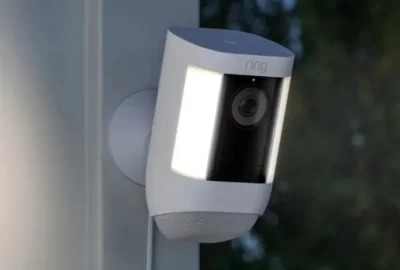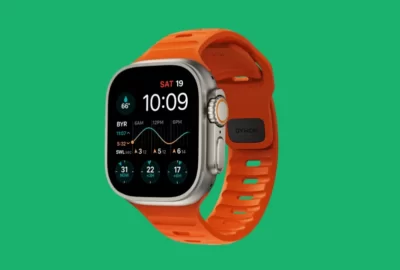Why Are My AirPods Cutting Out? 6 Reasons & How To Fix
Are your AirPods frequently cutting out? Find out why it occurs and how to fix it by reading on!
Consider watching an exciting movie or listening to your favorite song while the audio keeps skipping. How are you supposed to enjoy your me-time with that, isn’t it annoying?
So why are my AirPods cutting out? Many AirPod users report skipping or cutting out; while this is frequently related to the Bluetooth connection, there are a number of other possible causes as well.
This article will provide you with all the information you require regarding the reason your AirPods keep failing. The fixes in this article work with all versions of Apple AirPods, including the second generation, AirPods Pro, and AirPods Max, as well as Beats and Bluetooth headphones in general.
So continue reading to find out more if you’re having problems with your AirPods’ connectivity.
6 Reasons Why Your AirPods’ Keep Cutting Out
The AirPods have gained a lot of popularity as one of the most recognizable pieces of technology in recent years. AirPods have improved a lot of people’s lives in ways other than just as a tool for listening to music, so why not?
Audio cutting out is unfortunately still a common problem despite Apple’s efforts to improve with each new generation of the AirPods and AirPods Pro.
Cutoutsare when your audio keeps stuttering or sound choppy, even though your Your device still shows the AirPods as being connected. Unlike when they abruptly stop working with your device or when they simply sound too quiet, this is not the case with AirPods.
To prevent it from happening again, let’s first identify the cause of the cutouts issue before trying to fix it. And if it does happen again, you’ll be prepared by knowing what to do based on the most likely cause.
Here are 6 common reasons why the AirPods’ audio cuts out:
- Unstable connection
- AirPod sensor issues
- Low battery
- Incompatible firmware version
- Hardware defect
- Audio source issues
1. Unstable Connection
True wireless earbuds have convenience as one of their main benefits. One benefit is that you won’t have to worry about the device falling because you unintentionally dragged it by the wires or about the wires getting tangled.
However, this has a caveat: relying on a wireless connection makes them more susceptible to issues such as Bluetooth interference and range limits.
Bluetooth interference happens when something, such as physical objects or another wireless connection, obstructs the Bluetooth connection between your devices. For example, Bluetooth uses 2.4GHz frequency to contact your gadget. The typical Wi-Fi router also does this, though.
The 2.4GHz spectrum is a “space” where Wi-Fi and Bluetooth can “talk” to your device. The majority of this spectrum is typically taken up by Wi-Fi channels, while Bluetooth channels occupy any remaining space.
When there are few Wi-Fi sources, this is acceptable, but as Wi-Fi sources increase, less spectrum is available for Bluetooth to communicate with your device. Your AirPods stop working because of this.
Another important consideration is Bluetooth range. This is determined by how far you can move from your device while still staying connected. For AirPods, the optimal range is 30-60 ft (10-18 m). The connection deteriorates and the audio crackles as you move outside of this range.
2. AirPod Sensor Issues
Like many modern wireless headphones, the AirPods can recognize when they’re in your ear and will play or pause the music appropriately. This feature is called Automatic Ear Detectionand is turned on by default.
With this feature, the audio briefly stops when you take out one of your AirPods before starting again. The audio stops when you take them both off and doesn’t start again until you put them back.
This prevents audio cutouts for some users, but it also guarantees that you won’t miss a thing when you take off your AirPods. When the detection is inaccurate, such as when you are wearing the AirPods but they are unable to recognize you, this can occur.
3. Low Battery
You can no longer hear audio through the AirPods when their battery runs out because the Bluetooth connection is lost. The audio will nevertheless keep playing from your source device.

Your AirPods may also stop working if there is insufficient power—typically less than 20% of the battery’s capacity. After all, for devices to operate at their best, there must be enough power.
The AirPods provide up to 5 hours of listening time on a full charge. The charging case can also give your AirPods enough juice for 4-5 full charges.
4. Incompatible Firmware Version
The iOS operating system, which has undergone numerous iterations since its 2007 debut, powers Apple’s smartphones and tablets. Unfortunately, like many new releases, bugs are common in early stages of the updates. Your AirPods may experience problems, such as abrupt cutoffs, due to bugs and errors like these.
You should generally always keep the firmware for your AirPods and iOS software up to date. This is due to the fact that bugs that existed in earlier versions ought to have been resolved by more recent versions.
5. Hardware Defect
Hardware issues can also cause problems. These include manufacturing defects like what happened with a small number of In October 2020, AirPods Pro was made available. Or even damages acquired from use (which may be covered by your warranty). Other times, this is because the AirPods are counterfeit.
Sound problems can be brought on by flaws or damage to the AirPods’ internal electronics. Imitated goods, however, lack the proper Apple software. The majority simply have poor build quality and look-alike features that don’t function properly.
AirPods may also malfunction due to the accumulation of dust and dirt, so it’s best to clean your occasionally using AirPods.
6. Audio Source Issues
If you’re sure the AirPods are fine but the audio still cuts out, then maybe the audio source is the problem.
Too many open apps on the audio source may be interfering with Bluetooth connectivity or slowing down its performance, which the AirPods need. Without a software update, the required drivers might already be outdated.
Additionally, audio enhancements in the audio source can cause audio cut outs. It may happen even though it seems counterintuitive if the AirPods are unable to support the additional processing load.
Related Reading: Why Are My Airpods Dying So Fast?
How to Fix AirPods That Keep Cutting Out?
Here are some fixes you can try now that you are aware of every potential cause for your AirPods to keep disconnecting. The majority of them will involve the device that provides your connection (laptop, smartphone, or computer).
Also, be sure to review each fix to determine which one is most effective for you.
Fix 1: Improve Your Bluetooth Connection
If you’re listening to streamed audio content, your headphones might lose their connection more often. Try troubleshooting your device by doing the following:
- Turn on your AirPods and pair them with your device using Bluetooth.
- With the device within feet away from your Try using your headphones, AirPods, to listen to music or audio files that are stored on your device.
- If you’re listening on an Apple device, open the Music app or iTunes and play a song that does not have the Download button (cloud with a downward arrow) next to it.
- On Android devices, try playing downloaded music from your default music player and see if your The AirPods operate normally.
Another thing to avoid when using Bluetooth devices is interference. Audio is distorted as a result, and the source suddenly loses connection. Here are things that can improve your Bluetooth connection:
- Keep your iPhone, computer, Android device, or laptop at an optimal distance. Make sure that your device is not obstructed by anything, such as thick walls or floors.
- Move away from busy environments—places full of microwaves, cable connections, and other wireless devices, as well as Wi-Fi usage. This kind of surroundings is not ideal for your AirPods and may lead to further damage to internal components.
Fix 2: Unpair Your AirPods and Pair Them Again
This will work well, especially if your AirPods keep cutting in and out and disconnecting and you frequently experience connectivity problems. One trick is to unpair your AirPods to the device and pair them again. Here’s how you can do it:
To Unpair Your AirPods from An iPhone:
- Go to Bluetooth settings. Alternatively, swipe up to open the Control Center, then, press and hold on to the Bluetooth icon. Select Bluetooth Settings.
- Select the AirPods and press the Info button.
- Tap Forget This Device.
- Next, restart your iPhone.
To Unpair from An Android Device:
- Go to Connection Preferences can be found under Settings > Connected Devices.
- Select Bluetooth and find your the list of paired devices and selecting AirPods.
- Tap Unpair and restart your device.
To Pair Your AirPods Back to Your iPhone:
- With your iPhone on the Home Screen, open the AirPods charging case and hold it near to your iPhone. An animation for setup will appear.
- Tap Connect and follow the on-screen instructions. Depending on the model of your AirPods, you might be prompted to sync Siri as part of the setup procedure.
- Next, tap Done.
To Pair Your AirPods Back on An Android Device:
- To display the notification panel, swipe downward. Tap the Bluetooth icon to turn it on.
- Open the AirPods charging case and hold it close to your phone.
- Then, press the Setup button at the back of the case until the status light flashes white.
- Find your AirPods from the list of nearby To pair Bluetooth devices, tap on them.
Fix 3: Check the AirPods’ Battery Level
After not using your AirPods for a long time, you may need to charge them first for them to work normally. When the AirPods’ battery is low, interruptions and abrupt disconnections may occur.
To check the battery level of your AirPods via the Battery Widget, do the following:
- Utilize the Widgets page to apply it to your screen. Tap and hold on to a part of your Home Screen until you see a Plus button on the top-right corner of the screen.
- Tap it and using the search bar, type in Batteries and select Add Widget.
- You can check the battery life of your AirPods using the widget.
Although you usually charge your airpods in their case, you can also charge them separately.
Fix 4: Update the Firmware of Your AirPods
Your AirPods need to run with updated firmware for a seamless wireless connection to your device. To check if your AirPods run on the latest firmware available, follow these steps:
- Make sure the AirPods are connected to your iPhone and in their charging case.
- Go to Settings > General > About.
- Select the connected AirPods. Information about the device, including the firmware version, will be displayed. If it is 4C165, your Updated AirPods are required.
Currently, there are no methods to manually update your AirPods, since they update automatically when there’s a new firmware version.
Fix 5: Disable Automatic Wear Detection
One of the unique features of your AirPods is Automatic Wear Detection, where the If you have AirPods in your ears or not, they will automatically detect that. This feature may be useful, but it also has the potential to cause disconnection problems.
To disable Automatic Wear Detection on your iPhone, do the following:
- Go to Settings > Bluetooth.
- Select your paired AirPods and tap the Info icon.
- Set the Automatic Ear Detection setting to Off.
Read More: How to Connect AirPods If Case is Dead?
If the Issue Persists, Try Apple Support
If you’ve exhausted all your options, then it’s probably time to contact Apple Support.
Insightful information about problems prior users have encountered can be found on their online forums. However, you can also get in touch with them directly by phone or chat if you don’t have time to read through countless forum questions.
It’s crucial that you clearly explain your problem to Support when you contact them, though. Have the following noted down for a smoother and less troublesome experience:
- On your iPhone settings, go to Bluetooth and tap the “i” icon beside your AirPods’ name.
- Check and take note of the following AirPod specifications:
- Model number
- Serial number
- Version
- Note down the specifics of your issue or concern:
- What happened?
- When did it begin to occur?
- What have you done in response to it?
Read More:
Frequently Asked Questions
Why Does Only One AirPod Keep Cutting My Sound?
Batteries in AirPods must be recharged. Consider them as two distinct sources rather than a pair. It is virtually impossible that they have the same battery, meaning that one might lose percentage a little faster than the other. The best way to prevent this is to regularly check the battery levels on both of them to make sure that the percentages are close.
Why Do AirPods Keep Cutting Out on LapTop?
The most common issue with AirPods cutting out on your LapTop would be the Bluetooth connection. Your audio will most often be cut off by some sort of interference. The simplest fix is frequently the most obvious one; simply restart your laptop’s Bluetooth and connect your AirPods once more.
Why Do AirPods Keep Cutting Out While Moving?
Although obvious, this problem is widespread. We frequently wear our AirPods while walking or running, which causes a continuous signal disruption because of our movement. When you stop and the connection re-establishes, this is not a serious problem and will probably be resolved.
Why Are My AirPods Making Static Noise?
Static and crackling sounds usually occur as a result of a pairing issue between your AirPods, and your phone or another device.
Why Are My AirPods Glitchy?
Make sure your connected iPhone, iPad, iPod touch, or Mac is running the most recent version of the software. Check that your connected device is nearby, and there’s no wireless interference or obstructions between you and your device. If the issue persists, try listening to audio from a different app.
Conclusion
In a perfect world, AirPods would never lag or stop working, giving you the best possible listening experience.
However, nothing is more annoying than occasionally listening to your favorite music while being disconnected. So, try these fixes out and see which one works best for you if you’re tired of your AirPods or AirPods Pro cutting out every few seconds.
Additionally, if your AirPods have hardware issues, it’s best to contact Apple Support or simply purchase a new pair. Read our post on how to connect AirPods to HP laptop if you want to learn more about AirPods.
Also Check:

